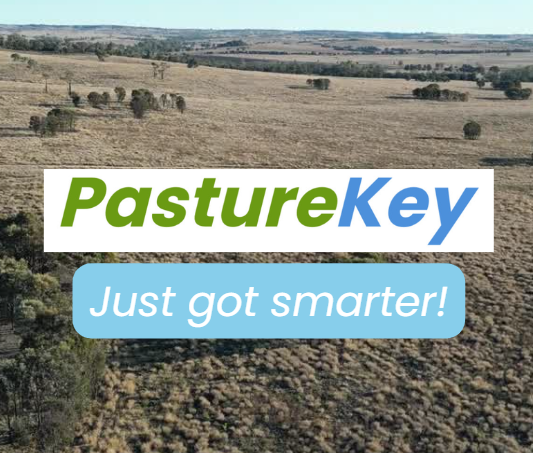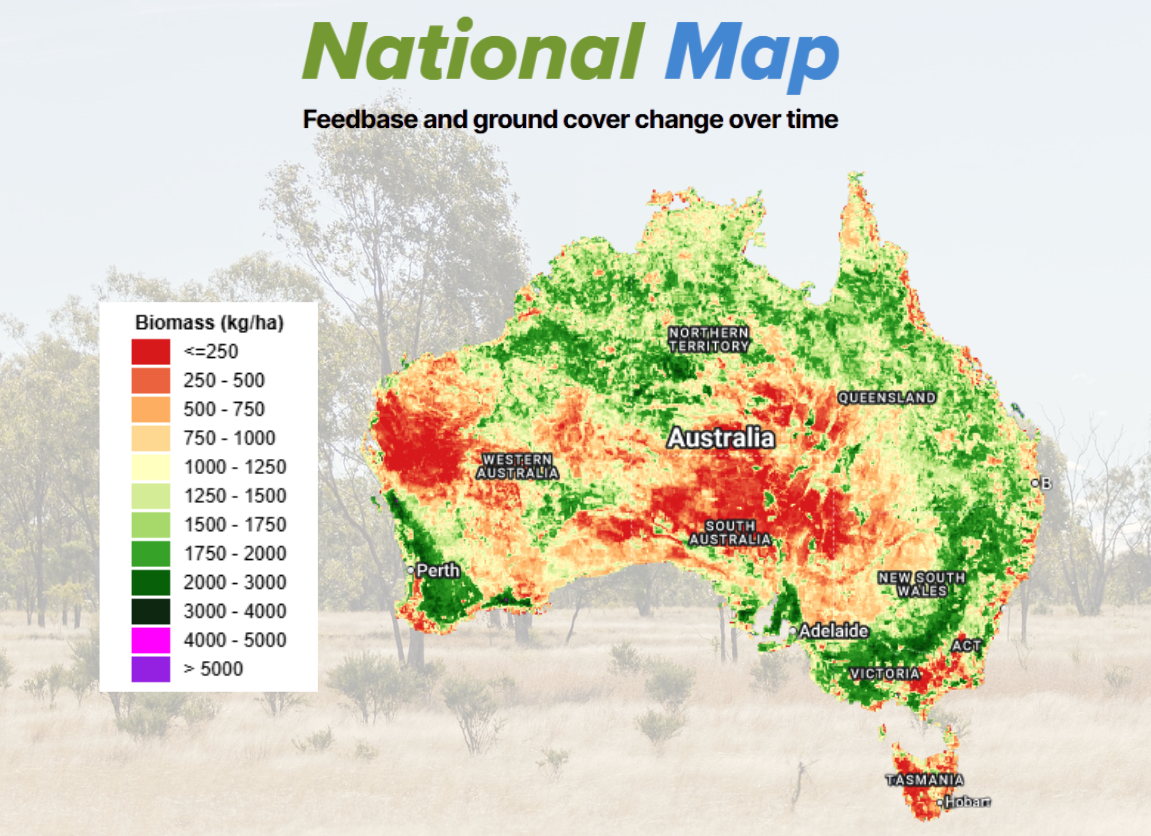Decoding the season: Use Pasture Deciles for smarter grazing decisions
Knowing whether your season is “good,” “bad,” or “average” is critical for proactive farm management. Traditionally, this decision relied heavily on...
3 min read
Cibo Labs Support Nov 7, 2025 10:01:07 AM

For livestock producers, accurate feedbase data underpins every major grazing and stocking decision. From estimating available feed and forecasting grazing days to planning agistment and managing drought risk, confidence in the numbers matters.
That confidence depends on how precisely satellite data can be translated into real-world pasture biomass. The better the model, the more reliable the insight.
This month, Cibo Labs released a significant upgrade to its PastureKey model, representing the most advanced version of Total Standing Dry Matter (TSDM) estimation yet. Rolled out to all active PastureKey subscriptions between 8–21 October 2025, this update marks a major leap forward in accuracy, consistency, and reliability for producers nationwide.
The new model introduces a completely redesigned architecture, built on refined machine-learning techniques and a stronger national calibration framework. The result is a system that interprets satellite signals with greater precision and stability, even under complex field conditions.
Key advancements include:
50% fewer parameters, allowing the model to learn patterns in the data more efficiently and avoid noise from environmental variability.
Improved data processing workflows, enabling more accurate readings in challenging environments affected by cloud, shading, or soil reflectance.
Expanded calibration network, now incorporating over 7,500 on-ground reference sites across Australia.
These calibration sites cover an expanded range of soil types, vegetation communities, and climate zones, including improved representation of the Northern Rangelands, Western Australia, and drought-affected inland regions. This broader dataset allows the model to better capture subtle differences in pasture growth patterns and feed availability across diverse Australian landscapes.
The improvements are measurable and substantial.
Through rigorous testing and validation, Cibo Labs confirmed that the upgraded model delivers a Mean Absolute Error (MAE) reduced from 235 kg/ha to 113 kg/ha, and a Mean Absolute Percentage Error (MAPE) reduced from 25% to just 13%.
In practical terms, this means the difference between estimated and measured pasture biomass has been cut in half.
Producers can expect:
Clearer, more stable biomass readings between satellite passes.
Improved consistency in regions where cloud, shading, or soil colour previously caused fluctuations.
More reliable short-term comparisons, helping producers track changes over days or weeks with confidence.
This increase in model fidelity supports sharper on-farm decisions. When you’re assessing how long a paddock can support stock, planning rotations, or benchmarking performance against previous seasons, every increment of accuracy counts.
To ensure every user benefits immediately from the upgrade, Cibo Labs has back-processed 60 days of data using the new model. This means all imagery and TSDM estimates from 8 October 2025 onwards now reflect the improved system.
Historical data prior to 10 August 2025 remains available for reference, including fractional cover and satellite cover layers, but continues to represent outputs from the previous model version.
When comparing past and current imagery, users may notice subtle differences in TSDM values, particularly in regions that experience complex soil reflectance or frequent cloud cover. These changes reflect improved accuracy, not a shift in satellite data collection.
In other words, you’re now seeing a more refined and realistic representation of what’s actually on the ground.
Every producer knows that feedbase information is only useful when it reflects reality. Inconsistent or noisy data can lead to uncertainty and uncertainty can translate into missed opportunities or unnecessary risk.
The updated model helps reduce that uncertainty. By increasing confidence in every TSDM reading, producers can:
Estimate feed availability with greater precision, especially in variable or low-growth periods.
Adjust stocking rates proactively, based on accurate short-term trends.
Strengthen feed budgeting, knowing the data underpinning decisions is statistically robust.
Plan with greater foresight, identifying potential shortfalls before they impact animal performance or land condition.
For producers operating large, complex properties or managing feed across multiple regions improved reliability at the paddock level translates directly into more consistent management and stronger business outcomes.
The upgrade also reflects Cibo Labs’ ongoing commitment to calibrating and testing models within the unique context of Australian rangeland and grazing environments.
Unlike global vegetation models, which often rely on generic algorithms or international datasets, PastureKey’s machine-learning framework is trained exclusively on Australian on-ground data. This includes calibration points across the tropical savannas, semi-arid grasslands, temperate pastures, and high-rainfall zones that make up the nation’s diverse feedbase.
By tailoring model parameters to Australian conditions, Cibo Labs ensures that regional nuances such as soil brightness, grass species composition, and seasonal phenology are captured more accurately than ever before.
The October 2025 model upgrade represents another milestone in Cibo Labs’ continuous improvement program. Over the coming year, the team will continue expanding its calibration dataset, refining spectral analysis techniques, and incorporating new validation data from producer partnerships and research networks.
Future developments will focus on:
Enhanced temporal consistency between satellite passes.
Improved seasonal growth forecasting to help producers anticipate transitions between green and dry biomass.
Ongoing integration of ground truthing data to validate model outputs and maintain the highest possible standards of accuracy.
Every iteration of the model is designed to deliver more precise, actionable intelligence, ensuring producers can make data-driven decisions with confidence, no matter where they operate.
The October 2025 PastureKey model upgrade is now live across all active subscriptions.
Producers are encouraged to log in and explore the changes firsthand. You may notice cleaner, more stable biomass trends, improved visibility across cloud-prone regions, and stronger alignment with ground conditions.
For full technical details on the October 2025 model update, including data validation metrics, calibration site distribution, and performance benchmarking visit: October 2025 Updates
Cibo Labs remains committed to delivering the highest quality satellite-derived pasture data available in Australia, helping producers see clearly, plan confidently, and manage proactively.

Knowing whether your season is “good,” “bad,” or “average” is critical for proactive farm management. Traditionally, this decision relied heavily on...

A step forward in feedbase intelligence For livestock producers, accurate feedbase data underpins every major grazing and stocking decision. From...

Ever wondered how your pastures compare to the rest of Australia? Whether you’re planning stocking rates, exploring agistment opportunities, or...